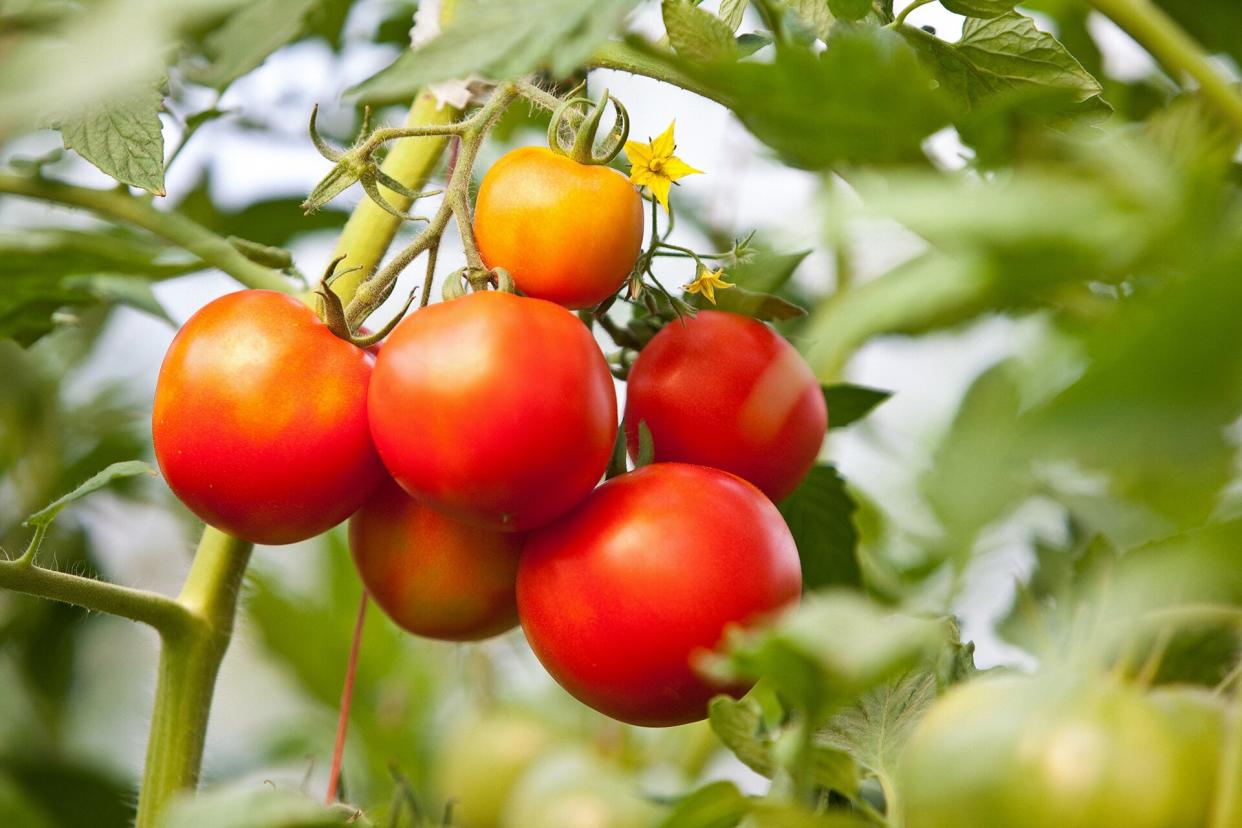5 Mistakes You're Making with Your Tomato Plants

Jed Share/Kaoru Share/Getty Images
Tomatoes are delicious and versatile, which makes them a favorite vegetable among home gardeners. While tomatoes are some of the most rewarding plants to grow, they can also be some of the most challenging and confounding, admits Levi Gardner, professor of environmental studies at Grand Valley State University and co-executive director of Urban Roots, a Grand Rapids, Michigan-based non-profit community farm and education center. If you can learn from your mistakes, however, you can grow the vibrant tomatoes you crave. "Learning the true nature of tomato plants, as well as how to care for them, can make growing them infinitely more rewarding," Gardner says. To help, here are five common mistakes that people make with tomato plants.
Related: How to Plant Tomatoes This Spring
Planting Them Too Soon
"No matter where you get your plants from, it's easy to want to immediately get the plant into the ground," Gardner commiserates. Before you do, he says, it's important to harden off the plant. "Because the plants have likely been in a controlled environment all their lives, they need to slowly be introduced to the outdoor elements—giving them the opportunity to adapt to the stresses of wind, rain, and variable temperatures that come with being out of a greenhouse is important," Gardner explains.
The hardening process takes one to two weeks—and you can do it by leaving your tomato plant outside for one hour on its first day, two on its second day, and so forth, "until the plant has adjusted without sunscald," Gardner says.
Not Planting the Roots Deep Enough
Your tomato plant will do best planted deeply in the soil, but too many home gardeners will plant it just a few inches down, says Gardner. "If the plant in its seedling form is more than a few inches tall, prune several of the leaves off and plant it down deep," he says. "If you look closely, the stem has tiny root hairs that, if buried, will begin to send out new roots."
In fact, Gardner typically buries all but half of his tomato plants' stems. "This will both help with the transition from its pot as well as establish a much stronger and more resilient root system," he promises. As a reference point, on a 12-inch plant, he suggests burying 6 to 8 inches of the plant.
Using a Tomato Cage
Every hardware and gardening store sells tomato cages, but Gardener says that they simply don't work. "Despite common wisdom, tomatoes are vines, not bushes," he explains. "And so, while tomato cages seem like a good idea at the beginning of the year, once the vines begin setting fruit in any significant way, they often overwhelm the flimsy cone—and end up falling to the ground."
Instead, Gardner recommends using a Florida Weave system or a hanging wire trellis, which can also be found at some gardening centers. "These trellising strategies both require more infrastructure and cost, and a little more know-how up front, but the rewards of big, juicy tomatoes will absolutely be worth it," the pro says.
Forgetting to Prune Your Plants
"Pruning tomatoes may seem like a strange chore for an annual, but for most indeterminate varieties, it will actually result in more and bigger fruit," Gardner says. He explains that, as tomato plants grow, they produce a lot of new shoots—colloquially called suckers—that, if left unpruned, can lead to a disproportionate number of stems without fruit. "If you don't manage these new shoots, you may end up with a whole plant of just suckers with no fruit to show," he says. "Pruning can ensure there is a good proportion of vegetative and reproductive growth—leaf to fruit ratio—and the plant is photosynthesizing at its best."
Choosing the Wrong Pest Control
All organic pesticides aren't created equal. Gardner suggests using organic products that have "OMRI," which stands for Organic Materials Review Institute, on the label. The designation ensures that the product you've purchased can be used as part of the National Organic Program, he explains. Then, Gardner recommends adding a concentrated, organic neem oil to your pesticide routine. "Tomatoes are highly susceptible to blight and tomato hornworm," he says. This organic spray helps to deter—but not kill—those pests.